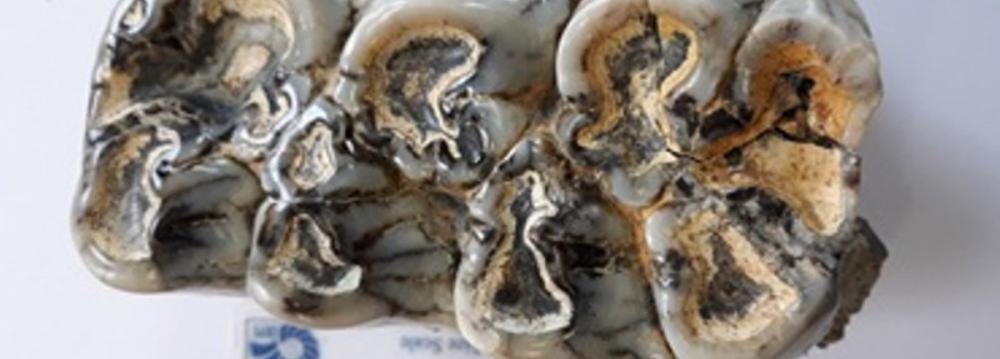Two pieces of fossil tooth belonging to ancient mammoths have been recently discovered during archaeological excavations in the northwestern province of Ardebil.
Dating back to the Quaternary Period (the current and most recent of the three periods of the Cenozonic Era in the geologic time scale of International Commission on Stratigraphy), there are pieces of evidence that the teeth belong to two adult bald mammoths of different sexes, Department of Environment's news service quoted Zahra Orak, head of the paleontology office at DOE as saying.
"The discovered teeth are absolutely unique in that they are the first pieces, among all so far found throughout the whole country, to have remained surprisingly intact," Orak said. One of the teeth is so similar to those of Indian elephants; hence, the odds are low that the mammoths were the ancestors of today's Indian elephants, the expert said. Reportedly, petrified remains of upper jaw and tusk fragments are also among the unearthed items. It is estimated that the animals lived in Iran almost two million years back in time, she noted.
Broader Studies in Sight
Pointing to the significance of the discovery and earlier similar cases, Tahereh Eftekhari, DOE's deputy for Natural History and Genetic Resources Bureau emphasized the necessity of extending field investigations and scrutiny over the history of the fossils in the area.
"The discoveries might open a new chapter in the field of vertebrate fossils, especially elephant-like animals," Eftekhari said.
In view of the fact that similar fossils have been found earlier in the territory of Iran's neighboring country, the Republic of Azerbaijan, the DOE is eager to start joint studies on the habitats of the huge mammals in cooperation with Azeri archaeologists.
Eftekhari suggested that studying the animals' migration path, locating their homeland and specifying their exact species in the wide genus of mammoths could be topics of future research.


